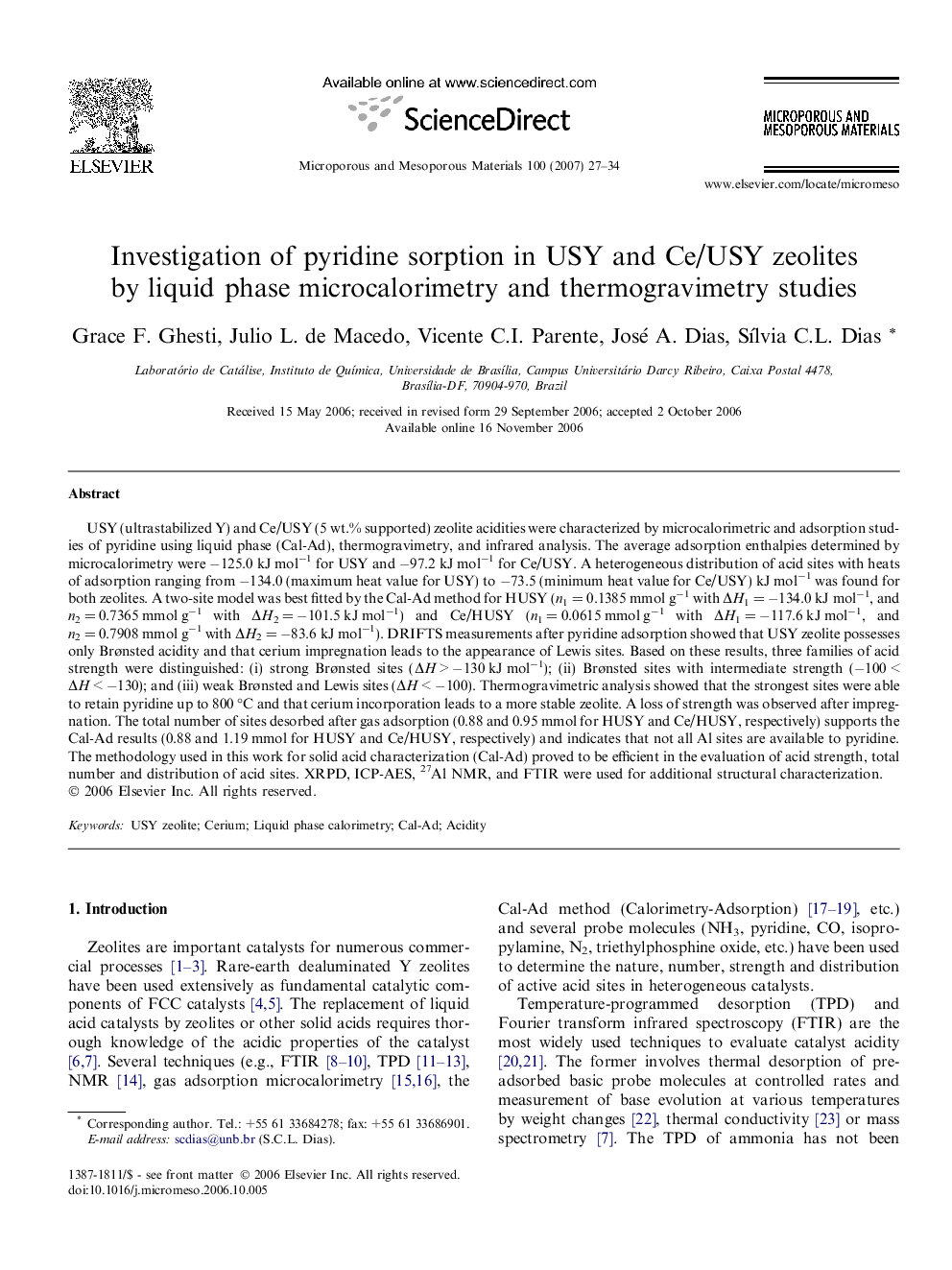| کد مقاله | کد نشریه | سال انتشار | مقاله انگلیسی | نسخه تمام متن |
|---|---|---|---|---|
| 76534 | 49142 | 2007 | 8 صفحه PDF | دانلود رایگان |

USY (ultrastabilized Y) and Ce/USY (5 wt.% supported) zeolite acidities were characterized by microcalorimetric and adsorption studies of pyridine using liquid phase (Cal-Ad), thermogravimetry, and infrared analysis. The average adsorption enthalpies determined by microcalorimetry were −125.0 kJ mol−1 for USY and −97.2 kJ mol−1 for Ce/USY. A heterogeneous distribution of acid sites with heats of adsorption ranging from −134.0 (maximum heat value for USY) to −73.5 (minimum heat value for Ce/USY) kJ mol−1 was found for both zeolites. A two-site model was best fitted by the Cal-Ad method for HUSY (n1 = 0.1385 mmol g−1 with ΔH1 = −134.0 kJ mol−1, and n2 = 0.7365 mmol g−1 with ΔH2 = −101.5 kJ mol−1) and Ce/HUSY (n1 = 0.0615 mmol g−1 with ΔH1 = −117.6 kJ mol−1, and n2 = 0.7908 mmol g−1 with ΔH2 = −83.6 kJ mol−1). DRIFTS measurements after pyridine adsorption showed that USY zeolite possesses only Brønsted acidity and that cerium impregnation leads to the appearance of Lewis sites. Based on these results, three families of acid strength were distinguished: (i) strong Brønsted sites (ΔH > −130 kJ mol−1); (ii) Brønsted sites with intermediate strength (−100 < ΔH < −130); and (iii) weak Brønsted and Lewis sites (ΔH < −100). Thermogravimetric analysis showed that the strongest sites were able to retain pyridine up to 800 °C and that cerium incorporation leads to a more stable zeolite. A loss of strength was observed after impregnation. The total number of sites desorbed after gas adsorption (0.88 and 0.95 mmol for HUSY and Ce/HUSY, respectively) supports the Cal-Ad results (0.88 and 1.19 mmol for HUSY and Ce/HUSY, respectively) and indicates that not all Al sites are available to pyridine. The methodology used in this work for solid acid characterization (Cal-Ad) proved to be efficient in the evaluation of acid strength, total number and distribution of acid sites. XRPD, ICP-AES, 27Al NMR, and FTIR were used for additional structural characterization.
Journal: Microporous and Mesoporous Materials - Volume 100, Issues 1–3, 23 March 2007, Pages 27–34